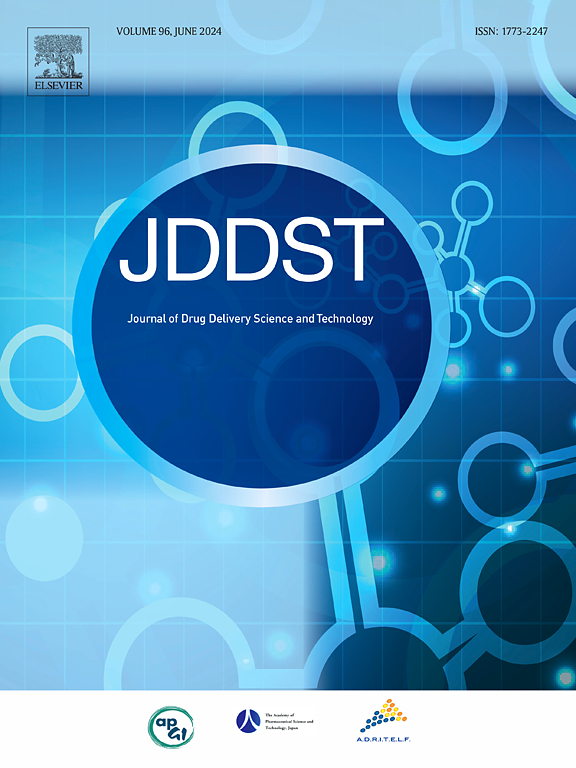3D printed mucoadhesive bupropion hydrochloride buccal thin films using Liquid Crystal Display
IF 4.5
3区 医学
Q1 PHARMACOLOGY & PHARMACY
Journal of Drug Delivery Science and Technology
Pub Date : 2025-04-04
DOI:10.1016/j.jddst.2025.106873
引用次数: 0
Abstract
Oromucosal delivery of active pharmaceutical ingredients offers a promising alternative method of administration, as it bypasses the first-pass metabolism and enhances patient compliance especially for people who have difficulties swallowing. In this study, liquid crystal display (LCD) 3D printing was explored as an additive manufacturing process for producing mucoadhesive thin films of various sizes containing bupropion hydrochloride (BUP·HCl). For this purpose, poly(ethylene) oxide (polyox 10N) was used as a mucoadhesion enhancer, while PEG200 was used as a plasticizer to form flexible BUP·HCl buccal films, and PEGDA700 served as a crosslinking agent. Solid-state analysis was carried out using differential scanning calorimetry (DSC and X-ray diffraction) which showed that BUP·HCl was in amorphous state within the printed films.
The swelling ratio of the thin films varied from 0.9 to 1.3 while ink composition resulted peak adhesive force values of 0.37–0.52Nmm and cohesiveness values between 8 and 9 mm affected by the content of poly(ethylene)oxide. Dissolution studies in simulated saliva showed immediate release for all the BUP·HCl thin films while the ex vivo permeability in porcine buccal epithelium revealed 52 % permeation within 120 min. The results demonstrated that LCD printing technology is a robust, time-efficient, and high precision technology that can be used for the design of personalized medications.

求助全文
约1分钟内获得全文
求助全文
来源期刊
CiteScore
8.00
自引率
8.00%
发文量
879
审稿时长
94 days
期刊介绍:
The Journal of Drug Delivery Science and Technology is an international journal devoted to drug delivery and pharmaceutical technology. The journal covers all innovative aspects of all pharmaceutical dosage forms and the most advanced research on controlled release, bioavailability and drug absorption, nanomedicines, gene delivery, tissue engineering, etc. Hot topics, related to manufacturing processes and quality control, are also welcomed.

 求助内容:
求助内容: 应助结果提醒方式:
应助结果提醒方式:


